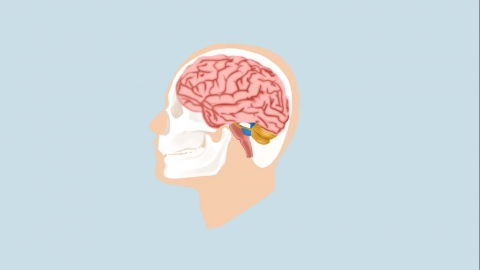What are the functions of the left and right brain?
Generally, the left brain is responsible for functions such as language expression and comprehension, logical reasoning and analysis, numerical calculation and processing, sequential and rule-based cognition, and detailed analysis and concentration. The right brain manages functions such as spatial perception and navigation, artistic creation and appreciation, intuitive and inspirational thinking, holistic cognition and pattern recognition, and emotional perception and expression. A detailed analysis is as follows:

I. Functions of the Left Brain
1. Language Expression and Comprehension
The left brain processes language information, including verbal expression and written language comprehension. It converts thoughts into clear, organized language. Whether in daily conversation or complex academic presentations, conveying information accurately relies on the left brain's ability to organize vocabulary and grammatical structures.
2. Logical Reasoning and Analysis
The left brain excels at logical thinking. When faced with mathematical problems, scientific analysis, or complex logical arguments, the left brain can draw conclusions through rigorous reasoning based on rules and premises.
3. Numerical Calculation and Processing
The left brain is sensitive to numbers and is responsible for mathematical calculations, from simple addition, subtraction, multiplication, and division to complex advanced mathematical computations. In financial work such as account auditing and budget preparation, the numerical processing ability of the left brain is essential.
4. Sequential and Rule-Based Cognition
The left brain perceives and understands sequences and rules. For example, when learning computer programming, understanding the execution sequence and grammatical rules of code ensures that the program runs correctly.
5. Detailed Analysis and Concentration
The left brain focuses on details. When reading documents or proofreading manuscripts, the left brain can敏锐ly detect subtle errors and differences in text, concentrating on detailed processing to ensure accuracy in work.
II. Functions of the Right Brain
1. Spatial Perception and Navigation
The right brain processes spatial information, helping people perceive the spatial location, shape, and orientation of objects. While driving, the right brain can judge the spatial relationship between the vehicle and its surroundings in real time, ensuring safe driving.
2. Artistic Creation and Appreciation
The right brain dominates functions related to art, providing unique perception and creativity toward artistic forms such as music, painting, and sculpture. It enables the appreciation of emotional content in music, inspires creativity during painting, and facilitates the creation of imaginative artistic works.
3. Intuitive and Inspirational Thinking
The right brain possesses intuitive thinking capabilities, allowing quick judgments and decisions without explicit logical reasoning. Many scientists rely on intuition to gain inspiration during research, leading them to discover new directions for investigation.
4. Holistic Cognition and Pattern Recognition
The right brain tends to grasp things as a whole, identifying overall patterns and structures. For instance, when recognizing a face, the right brain can rapidly judge based on overall contours and facial feature arrangements, rather than analyzing each individual facial detail one by one.
5. Emotional Perception and Expression
The right brain plays a crucial role in emotional recognition and expression. It can perceive others' emotional changes and express one's own inner feelings. In interpersonal communication, observing others' facial expressions and tone of voice helps understand their emotional states.
In daily life, to maintain normal brain function, it is recommended to maintain a healthy diet by consuming foods rich in unsaturated fatty acids, vitamins, and minerals, such as fish, nuts, and fresh fruits and vegetables, providing the brain with sufficient nutrition.




